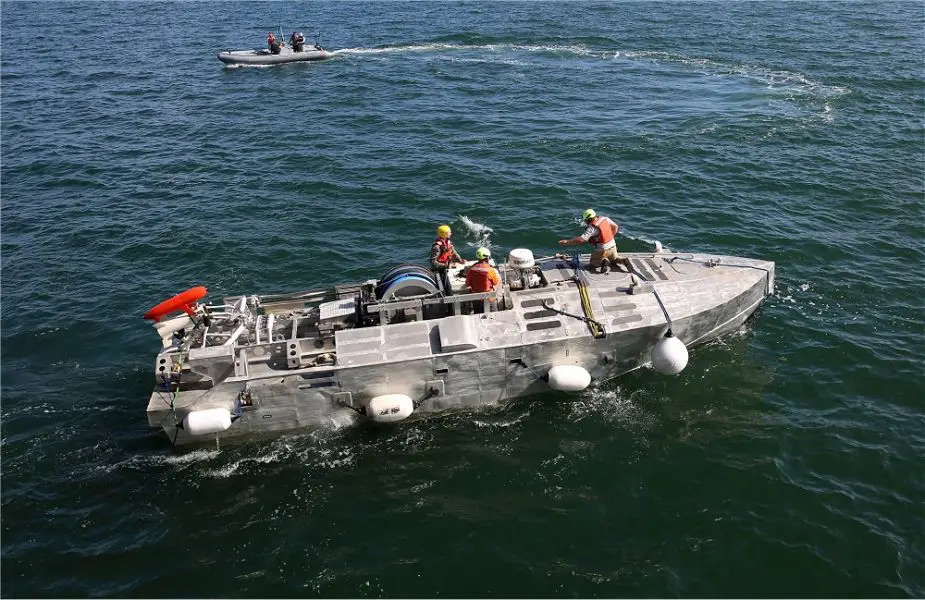Breaking news
US Navy has tested new anti-mine unmanned surface vehicle USV.
On September 14, 2019, the U.S. Navy has tested new anti-mine unmanned surface vehicle (aboard Military Sealift Command’s expeditionary sea base, USNS Hershel “Woody” Williams (T-ESB 4), into the Chesapeake Bay.
 A Sailor and civilian technicians monitor an unmanned surface vehicle (USV), after it was launched from Military Sealift Command's expeditionary sea base, USNS Hershel "Woody" Williams (T-ESB 4), into the Chesapeake Bay, September 14, 2019. (Picture source U.S. DoD)
A Sailor and civilian technicians monitor an unmanned surface vehicle (USV), after it was launched from Military Sealift Command's expeditionary sea base, USNS Hershel "Woody" Williams (T-ESB 4), into the Chesapeake Bay, September 14, 2019. (Picture source U.S. DoD)
The USNS Hershel "Woody" Williams (T-ESB-4) is an expeditionary mobile base sub-variant of the Montford Point-class expeditionary transfer dock (ESD) currently in service with the United States Navy (USN). The USNS Hershel "Woody" Williams was delivered to the U.S. Navy's Military Sealift Command in February 2018 and is the Navy's second, purpose-built ESB.
The 784ft.-long vessel features a 52,000 square-foot flight deck, fuel and equipment storage, repair spaces, magazines, and mission-planning spaces. Able to accommodate up to 250 personnel, USNS Hershel "Woody" Williams will support multiple missions, such as air mine countermeasures, counter-piracy operations, maritime security operations, humanitarian aid and disaster relief missions and crisis response operations. The ship has hybrid-manned crew with a combination of military personnel and civilian mariners.
The USV is a mine countermeasure platform and the evolution was the first time a USV has been launched and recovered by a Military Sealift Command ship. The Mine Countermeasures Unmanned Surface Vehicle (MCM USV) is a long-endurance, semi-autonomous, diesel-powered, all-aluminum surface craft that supports the employment of various MCM payloads.
Core capabilities of the MCM USV craft include propulsion, power generation, communications to/from the host ship, radar, optical cameras, navigation and a modular payload system. The MCM USV is capable of being launched and recovered by the Littoral Combat Ship (LCS), from other Vessels of Opportunity (VOO), or from shore sites.
When employed with the Minesweeping PDS, MCM USV supports minesweeping operations. The MCM USV employs the influence sweep system, which is designed for sweeping of magnetic, acoustic, and magnetic/acoustic combination mine-types. Known as the Unmanned Influence Sweep System (UISS), the system tows the modified Mk-104 system acoustic generator and a magnetic minesweeping cable.
When employed with a Minehunting PDS and minehunting payload (e.g., surface towed sonar), MCM USV will support minehunting operations, including detection, identification, classification and localization of volume and bottom mine-like contacts.


























